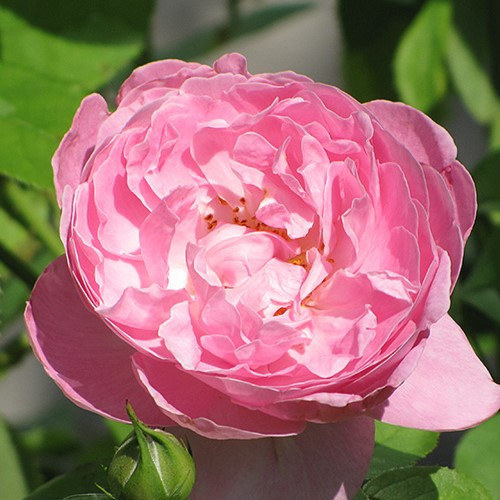| Hedera helix 'Baltica' | USDA Zone: 5-10 |
Baltic Ivy is an evergreen climbing vine or dense groundcover with beautiful deep green foliage that will cover walls, trees and fences in short order; benefits from some protection from sun and wind in winter; very adaptable and vigorous, one of the hardiest varieties.
Baltic Ivy has dark green foliage. The glossy lobed leaves remain dark green throughout the winter.
Baltic Ivy is recommended for the following landscape applications;
- Hedges/Screening
- General Garden Use
- Groundcover
- Container Planting
Fast growing vine; self-clinging stems
Deer Resistant
Common Name: Baltic Ivy
|
Key Feature
|
Light Needs | Landscape Uses |
 |
 |
|
|
|
|
| More About Baltic Ivy |
| Height: 1-2 ft + |
Spread: 20+ ft |
|
Baltic Ivy will grow to be about 8 inches tall at maturity, with a spread of 20 feet. As a climbing vine, it tends to be leggy near the base and should be underplanted with low-growing facer plants. It should be planted near a fence, trellis or other landscape structure where it can be trained to grow upwards on it, or allowed to trail off a retaining wall or slope. It grows at a fast rate. Baltic Ivy performs well in both full sun and full shade. It prefers to grow in average to moist conditions, and shouldn't be allowed to dry out. It is not particular as to soil pH, but grows best in rich soils, and is able to handle environmental salt. It is highly tolerant of urban pollution and will even thrive in inner city environments, and will benefit from being planted in a relatively sheltered location. Consider covering it with a thick layer of mulch in winter to protect it in exposed locations or colder microclimates. Baltic Ivy makes a fine choice for the outdoor landscape, but it is also well-suited for use in outdoor pots and containers. Because of its spreading habit of growth, it is ideally suited for use as a 'spiller' in the 'spiller-thriller-filler' container combination; plant it near the edges where it can spill gracefully over the pot. Note that when grown in a container, it may not perform exactly as indicated on the tag - this is to be expected. Also note that when growing plants in outdoor containers and baskets, they may require more frequent waterings than they would in the yard or garden. Be aware that in our climate, most plants cannot be expected to survive the winter if left in containers outdoors, and this plant is no exception. NOTE: Some flowers and plants may be harmful or poisonous to people or pets if touched or ingested. If you require more information before placing an order, please let us know in advance. |









